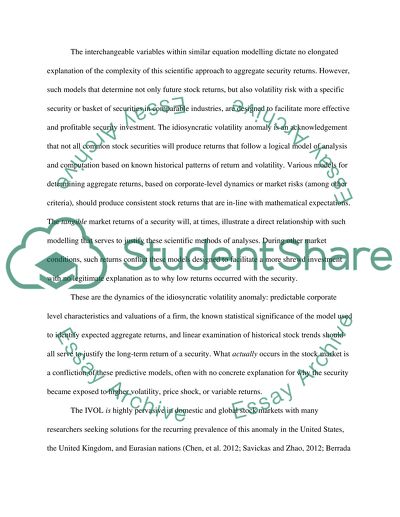Cite this document
(“The Idiosyncratic Volatility Anomaly Essay Example | Topics and Well Written Essays - 1500 words”, n.d.)
Retrieved from https://studentshare.org/finance-accounting/1456886-the-idiosyncratic-volatility-anomaly
Retrieved from https://studentshare.org/finance-accounting/1456886-the-idiosyncratic-volatility-anomaly
(The Idiosyncratic Volatility Anomaly Essay Example | Topics and Well Written Essays - 1500 Words)
https://studentshare.org/finance-accounting/1456886-the-idiosyncratic-volatility-anomaly.
https://studentshare.org/finance-accounting/1456886-the-idiosyncratic-volatility-anomaly.
“The Idiosyncratic Volatility Anomaly Essay Example | Topics and Well Written Essays - 1500 Words”, n.d. https://studentshare.org/finance-accounting/1456886-the-idiosyncratic-volatility-anomaly.


